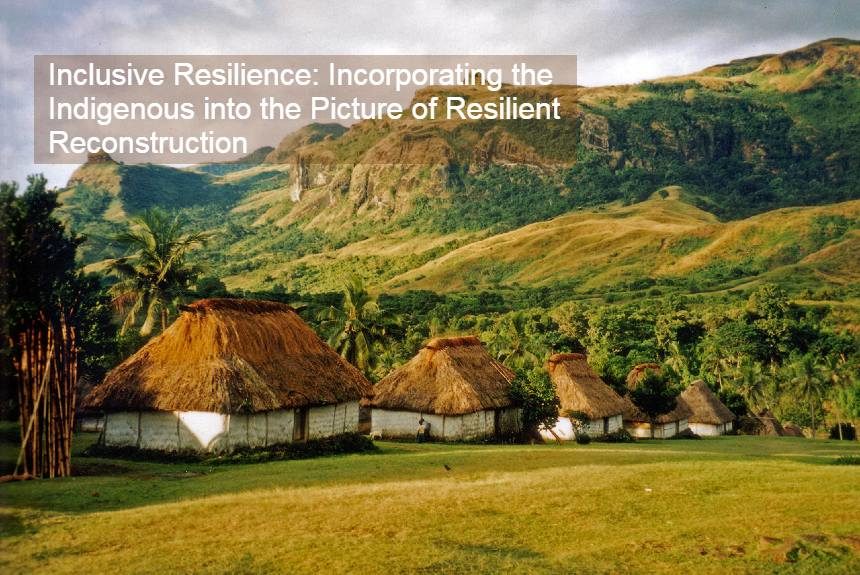When tropical cyclone Winston hit Fiji in 2016, it destroyed and damaged 30,000 houses in the country.
The damages to these houses and buildings revealed something about the structures of these houses, which is a primary reason for its failure – destroyed Fijian homes lack proper lateral load resisting system.
Additionally, the country lacked skilled workers and limited knowledge in compliance with their building code.
A study by Aquino et al. focuses on the traditional structures of Fiji, particularly in the village of Navala, as a resilient solution in the restoration of the village in the aftermath of the tropical cyclone.
Navala’s Bure houses
Navala village is located at the bank of Ba River, in the province of Ba in Viti Levu, Fiji’s biggest and most populous island. The village is the last remaining traditional village of Fiji because it was able to preserve its traditional houses known as Bure.
Bure is made from locally sourced materials like bamboo, local reeds and ferns for its roofs; pandanus leaves woven into mats covering the dirt floors, and hardwood for its posts.
These traditional houses are also a source of income for some villagers. Some villages offer their Bure homes as accommodation for tourists who wanted a taste of authentic Fijian culture and lifestyle.
Building resilience for post-disaster recovery using traditional knowledge
The study highlights traditional knowledge or indigenous construction practices as a resilient post-disaster recovery solution for the indigenous people in Fiji.
Bure is a product of indigenous people building skills through trial and error, which have withstood various environmental and socio-cultural tests.
Because Bure’s materials are locally resourced, and building these structures is a communal activity, post-disaster recovery using the traditional method is faster and more sustainable because materials and human resources necessary for rebuild are immediately available.
The study also presents examples from around the world of communities who chose to rebuild through preserving their traditional practices and methods.
Challenges to Rebuilding Bure Houses
The study aims to review Fiji’s policies that influence the reconstruction of housing structures after a disaster. It wants to know why contemporary or modern houses are preferred to replace disaster-damaged Bure housing in the recovery phase and how communities can build Bure houses if they choose to do so.
The study revealed three central challenges to rebuilding Bure in the aftermath of a disaster, to wit:
(1) Differing views on the meaning of resilient housing structures among stakeholders in Fiji. The local government promotes the building of modern houses versus the traditional ones. So the information is given to communities regarding rebuild, construction materials, etc., only pertains to the latter type.
(2) Indigenous construction design and method are not recognized or included in Fiji’s building codes and standards, primarily based on Australian and New Zealand building codes and standards.
(3) Fiji’s government policies and programs favour rebuilding using contemporary housing structures and materials.
Fiji government has extended financial support to rebuild the houses damaged by cyclone Winston. However, this fund can only be used to buy materials from government accredited hardware stores.
This can be restrictive to those who may wish to rebuild their traditional houses because the materials they need may not be available in these stores.
In light of the government policies regarding resilient post-disaster recovery and the application of the Build Back Better concepts to post-disaster recovery and rebuilding, there should be a broader interpretation and application of resilience.
Therefore, a resilient house should not only be sturdy and withstand extreme events due to climate change and natural disasters, but it should be able to adapt to changes and environmental conditions.
It should also be flexible and “one that might be feeble but quick and easy to reconstruct”, according to the study.
To read the entire study, click the link below:
Source Citation:
Aquino D.H.M., Wilkinson S., Raftery G.M., Mannakkara S. (2021) Inclusive Resilience: Incorporating the Indigenous into the Picture of Resilient Reconstruction. In: Djalante R., Bisri M.B.F., Shaw R. (eds) Integrated Research on Disaster Risks. Disaster Risk Reduction (Methods, Approaches and Practices). Springer, Cham. https://doi.org/10.1007/978-3-030-55563-4_16



Leave a Reply